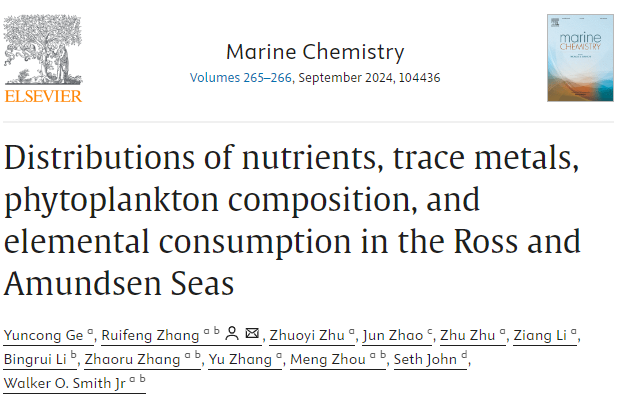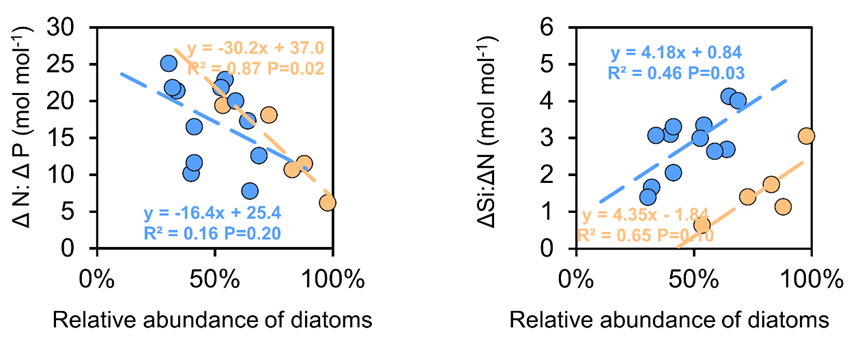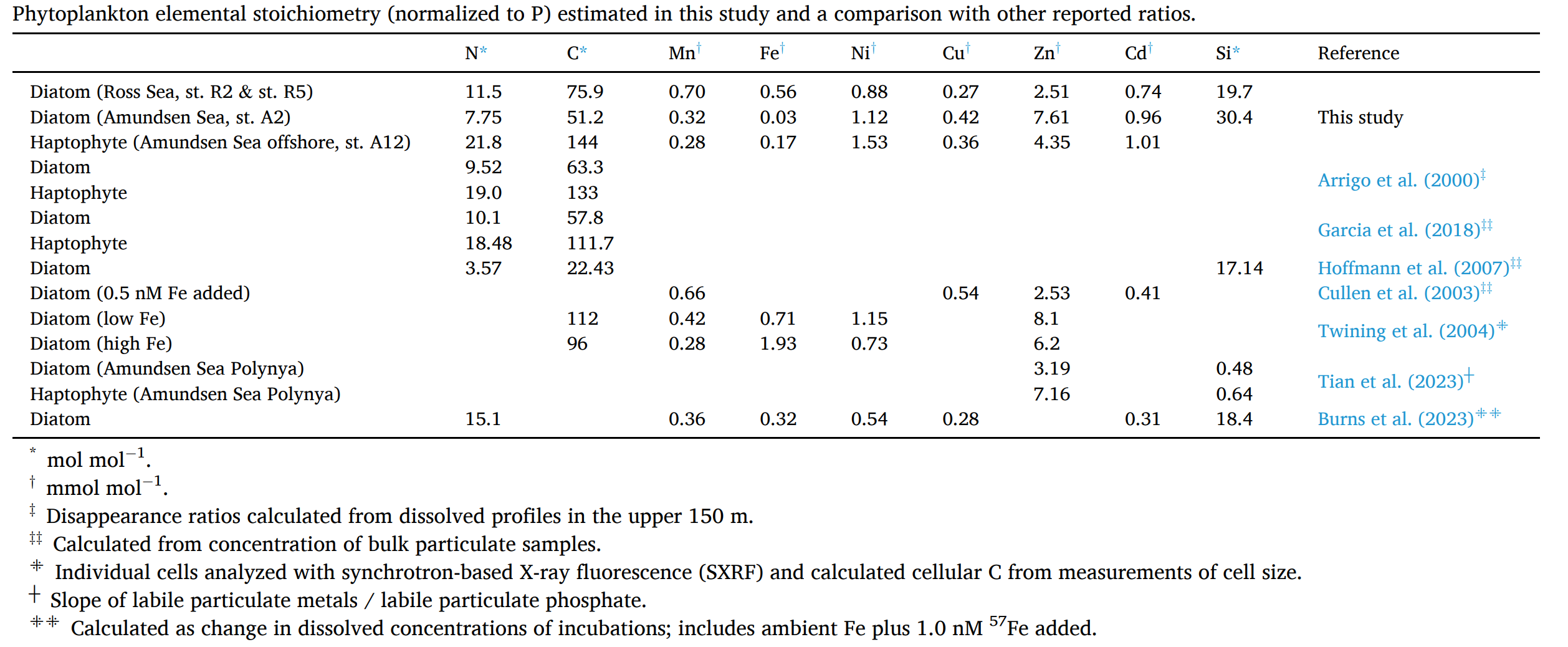Recently, PhD student Ge Yuncong at the School of Oceanography, Shanghai Jiao Tong University, published a research paper titled "Distributions of nutrients, trace metals, phytoplankton composition, and elemental consumption in the Ross and Amundsen Seas" in the journal 《Marine Chemistry》. The paper lists Research Professor Zhang Ruifeng from the School of Oceanography as the corresponding author, with contributions from several other researchers including Research Professor Zhu Zhuoyi, Associate Professor Zhu Zhu, PhD student Li Zi’ang, Associate Professor Zhang Zhaoru, Research Professor Zhang Yu, Professor Zhou Meng, Professor Walker O. Smith Jr., Associate Researcher Zhao Jun from the Second Institute of Oceanography of the Ministry of Natural Resources, Research Professor Li Bingrui from the Polar Research Institute of China, and Professor Seth John from the University of Southern California. The School of Oceanography at Shanghai Jiao Tong University is the primary institution responsible for this research.
The Southern Ocean is a significant carbon sink and a crucial source of mid- and deep-water masses for low-latitude oceans. The Ross and Amundsen Seas are regions of high productivity within the Southern Ocean and are highly sensitive to climate change. Understanding the sources and sinks of nutrients, particularly trace metals, in these areas is essential for assessing their ecological impact and their influence on global ocean elemental distribution. Trace metals have multiple sources and exhibit notable regional differences, influenced by complex physical processes. The supply of trace metals, especially iron, along with other environmental parameters, can affect phytoplankton biomass, community composition, and elemental uptake characteristics. This, in turn, regulates nutrient distribution patterns in the Southern Ocean and globally by influencing the water-particle elemental composition. Phytoplankton in the Southern Ocean are therefore considered "gatekeepers" of global elemental cycles. To investigate the relationship between iron supply, phytoplankton composition, and elemental uptake stoichiometry, the research team conducted a series of observations in the Ross and Amundsen Seas during 38th Chinese National Antarctic Research Expedition (Figure 1).
 Sources of trace metals, such as melting sea ice, sediment release, and island effects, have been progressively identified. These trace metals are transported both horizontally and vertically through various physical processes, including advection, diffusion, and winter mixing. The uneven contribution of metals from sea ice and islands—where iron is supplied in greater quantities relative to other essential nutrients—leads to increased biomass and significant consumption of non-limiting nutrients. The consumption of trace metals in the surface layer is closely linked with particulate organic carbon concentration, indicating that the primary nutrient supply mechanism for surface waters is the upward transport of nutrient-rich deep water during winter mixing. In the Ross and Amundsen Seas, the phytoplankton communities are predominantly composed of diatoms and Phaeocystis antarctica. Continuous observations have shown that diatom growth largely determines the distribution of trace metal concentrations in the surface waters of the Ross Sea. This growth also affects the nitrogen-to-phosphorus ratio in the water, highlighting the critical role of diatoms in the elemental cycle. Based on the relationship between surface nutrient concentration consumption and particulate organic carbon, the research team estimated the elemental uptake stoichiometry of diatoms in the Ross Sea, diatoms in the Amundsen Sea, and Phaeocystis antarctica in the Amundsen Sea. The results revealed significant differences in elemental uptake characteristics between diatoms and Phaeocystis antarctica, as well as between diatoms from the Ross Sea and those from the Amundsen Sea. The observed differences between diatom populations may be attributed to a "growth dilution" effect caused by iron supply.
Sources of trace metals, such as melting sea ice, sediment release, and island effects, have been progressively identified. These trace metals are transported both horizontally and vertically through various physical processes, including advection, diffusion, and winter mixing. The uneven contribution of metals from sea ice and islands—where iron is supplied in greater quantities relative to other essential nutrients—leads to increased biomass and significant consumption of non-limiting nutrients. The consumption of trace metals in the surface layer is closely linked with particulate organic carbon concentration, indicating that the primary nutrient supply mechanism for surface waters is the upward transport of nutrient-rich deep water during winter mixing. In the Ross and Amundsen Seas, the phytoplankton communities are predominantly composed of diatoms and Phaeocystis antarctica. Continuous observations have shown that diatom growth largely determines the distribution of trace metal concentrations in the surface waters of the Ross Sea. This growth also affects the nitrogen-to-phosphorus ratio in the water, highlighting the critical role of diatoms in the elemental cycle. Based on the relationship between surface nutrient concentration consumption and particulate organic carbon, the research team estimated the elemental uptake stoichiometry of diatoms in the Ross Sea, diatoms in the Amundsen Sea, and Phaeocystis antarctica in the Amundsen Sea. The results revealed significant differences in elemental uptake characteristics between diatoms and Phaeocystis antarctica, as well as between diatoms from the Ross Sea and those from the Amundsen Sea. The observed differences between diatom populations may be attributed to a "growth dilution" effect caused by iron supply.
In the context of climate change, the nutrient (iron) supply patterns in the Ross and Amundsen Seas could undergo dramatic changes, potentially altering the nutrient utilization strategies and community structure of phytoplankton, thereby impacting global elemental cycles.

This research was supported by the National Key Research and Development Program of China (grant no. 2022YFE0136500); the National Natural Science Foundation of China (grant nos. 41941008, 41976228); the Shanghai Pilot Program for Basic Research of Shanghai Jiao Tong University (grant no. TQ1400201); the Chinese Arctic and Antarctic Administration (grant nos. IRASCC2020-2022-No. 01-02-01B, 01-01-02A); the Oceanic Interdisciplinary Program of Shanghai Jiao Tong University (grant no. SL2022ZD207); the Shanghai Frontiers Science Center of Polar Science (SCOPS).
https://www.sciencedirect.com/science/article/abs/pii/S0304420324000872
